Rund 100 Nanometer lange Polymerketten koennen als winzige Schalter fuer kuenftige technische Anwendungen dienen. Bisher galt die Reaktionszeit der Nanostrukturen jedoch als zu langsam - eine Gruppe von Forschern der Uni Duisburg-Essen hat nun das Gegenteil bewiesen.
May 10th, 2011
Read more
Physicists have succeeded in developing a procedure to merge magneto-optics and plasmonics. The effects which were realized for the first time are already that promising, that their application in electronic components should be possible in the next future.
May 10th, 2011
Read more
NanoCentral will be holding a seminar, "An Introduction to Nanotechnology", on the afternoon of 7th June at the Hotel Russell in London, UK.
May 10th, 2011
Read more
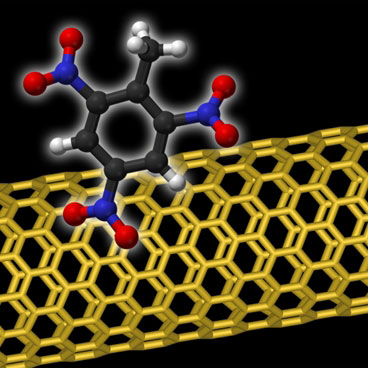 MIT researchers have created a new detector so sensitive it can pick up a single molecule of an explosive such as TNT.
MIT researchers have created a new detector so sensitive it can pick up a single molecule of an explosive such as TNT.
May 9th, 2011
Read more
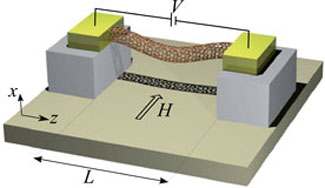 What limits the behaviour of a carbon nanotube? This is a question that many scientists are trying to answer. Physicists at University of Gothenburg, Sweden, have now shown that electromechanical principles are valid also at the nanometre scale. In this way, the unique properties of carbon nanotubes can be combined with classical physics - and this may prove useful in the quantum computers of the future.
What limits the behaviour of a carbon nanotube? This is a question that many scientists are trying to answer. Physicists at University of Gothenburg, Sweden, have now shown that electromechanical principles are valid also at the nanometre scale. In this way, the unique properties of carbon nanotubes can be combined with classical physics - and this may prove useful in the quantum computers of the future.
May 9th, 2011
Read more
In public lecture at UC Riverside on May 19, graphene expert Jeanie Lau will discuss wonders of the new exciting material.
May 9th, 2011
Read more
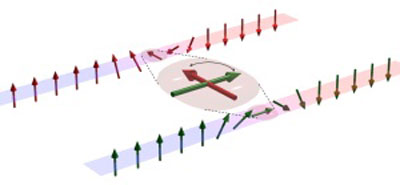 Experimental evidence of intrinsic pinning of magnetic domain walls will aid the development of next-generation memories.
Experimental evidence of intrinsic pinning of magnetic domain walls will aid the development of next-generation memories.
May 9th, 2011
Read more
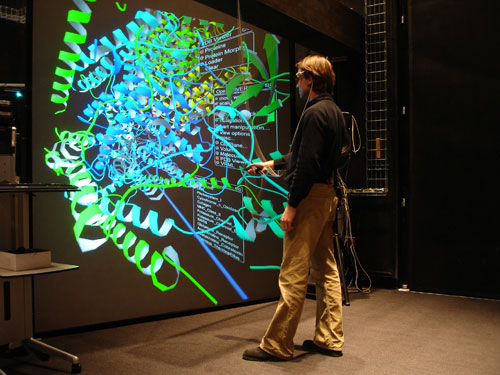 Virtual reality immerses students in proteins and peptides.
Virtual reality immerses students in proteins and peptides.
May 9th, 2011
Read more
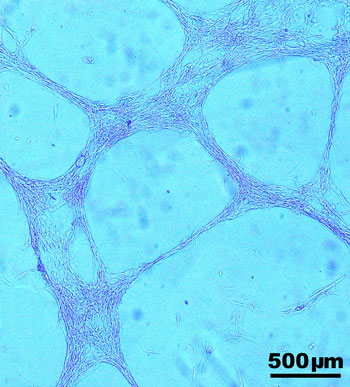 Researchers in Spain are working on a project that analyzes the use of new reinforced hydroxyapatite compounds as replacements for bones.
Researchers in Spain are working on a project that analyzes the use of new reinforced hydroxyapatite compounds as replacements for bones.
May 9th, 2011
Read more
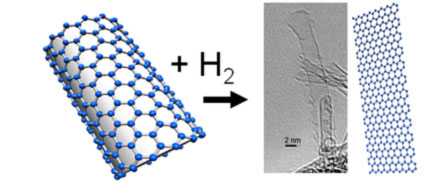 An international research team has discovered a new method to produce belts of graphene called nanoribbons. By using hydrogen, they have managed to unzip single-walled carbon nanotubes. The method also opens the road for producing nanoribbons of graphane, a modified and promising version of graphene.
An international research team has discovered a new method to produce belts of graphene called nanoribbons. By using hydrogen, they have managed to unzip single-walled carbon nanotubes. The method also opens the road for producing nanoribbons of graphane, a modified and promising version of graphene.
May 9th, 2011
Read more
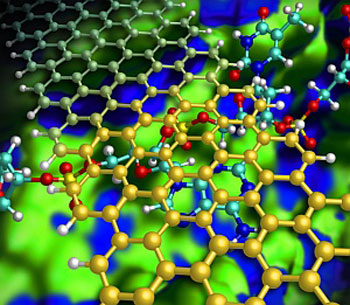 Researchers propose a model for a high-speed device that can sequence entire DNA strands using a nanochannel structure in combination with graphane nanoribbons.
Researchers propose a model for a high-speed device that can sequence entire DNA strands using a nanochannel structure in combination with graphane nanoribbons.
May 9th, 2011
Read more
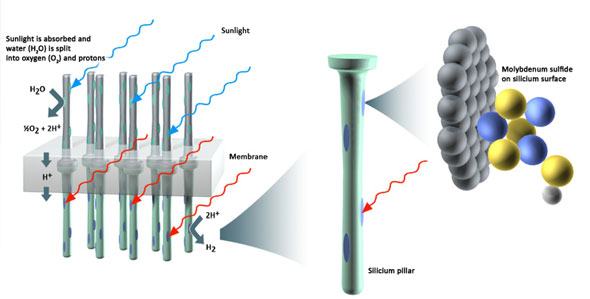 Scientists from CINF, CASE, Stanford University and SLAC National Accelerator Laboratory have engineered a cheap, abundant alternative to the expensive platinum catalyst and coupled it with a light-absorbing electrode to make hydrogen fuel from sunlight and water.
Scientists from CINF, CASE, Stanford University and SLAC National Accelerator Laboratory have engineered a cheap, abundant alternative to the expensive platinum catalyst and coupled it with a light-absorbing electrode to make hydrogen fuel from sunlight and water.
May 9th, 2011
Read more
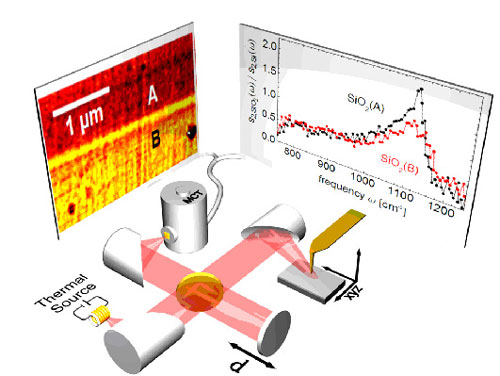 Researchers from the Basque nanoscience research center CIC nanoGUNE and Neaspec GmbH (Germany) have developed an instrument that allows for recording infrared spectra with a thermal source at a resolution that is 100 times better than in conventional infrared spectroscopy.
Researchers from the Basque nanoscience research center CIC nanoGUNE and Neaspec GmbH (Germany) have developed an instrument that allows for recording infrared spectra with a thermal source at a resolution that is 100 times better than in conventional infrared spectroscopy.
May 9th, 2011
Read more
 Combining the unique optical properties and potential for surface functionality of silicon nanostructures with the electronic properties of quantum dots offers exciting prospects for biological and optoelectronic applications. In particular, silicon nanowires coated with metal nanoparticles are known to display enhanced optical properties that could be used as the basis for more-efficient, longer-lasting biological sensors.
Combining the unique optical properties and potential for surface functionality of silicon nanostructures with the electronic properties of quantum dots offers exciting prospects for biological and optoelectronic applications. In particular, silicon nanowires coated with metal nanoparticles are known to display enhanced optical properties that could be used as the basis for more-efficient, longer-lasting biological sensors.
May 9th, 2011
Read more
Physicists have made the first precise measurements of the "edge states" of well-ordered nanoribbons.
May 8th, 2011
Read more
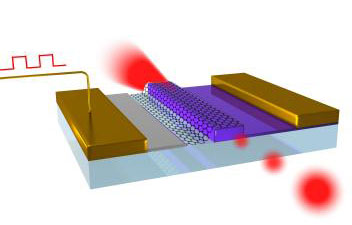 Scientists at the University of California, Berkeley, have demonstrated a new technology for graphene that could break the current speed limits in digital communications.
Scientists at the University of California, Berkeley, have demonstrated a new technology for graphene that could break the current speed limits in digital communications.
May 8th, 2011
Read more












 Subscribe to our Nanotechnology News feed
Subscribe to our Nanotechnology News feed